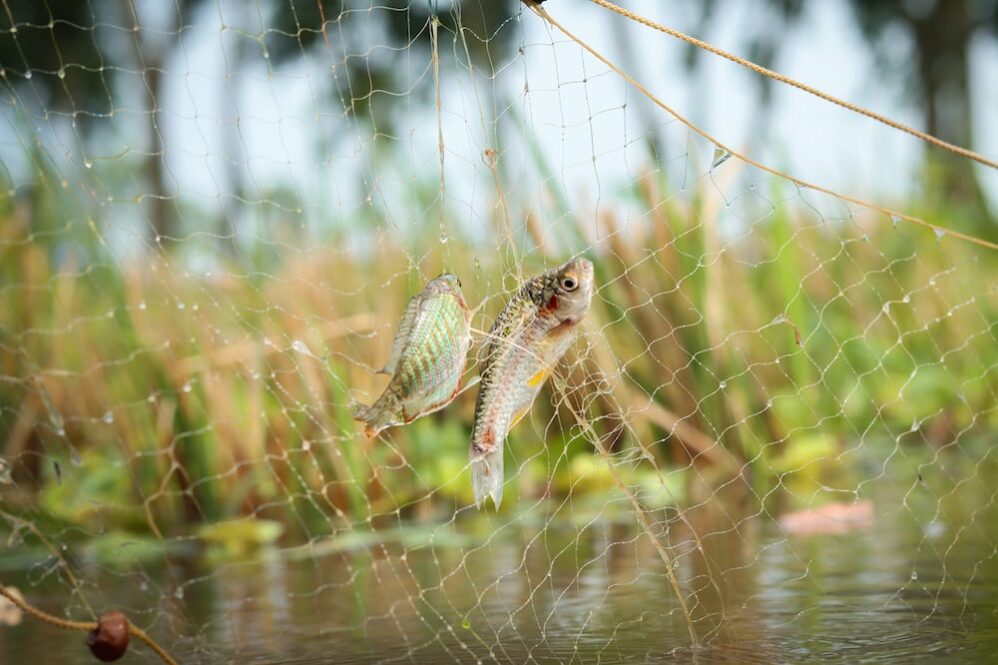Aquaculture, the practice of cultivating aquatic organisms like fish, shellfish, and plants under controlled conditions, has become a vital component of the global food supply chain. As traditional fishing methods face challenges due to overfishing and environmental concerns, aquaculture offers a sustainable solution to meet the growing demand for seafood protein. In this context, exploring investment opportunities in aquaculture ventures presents a promising avenue for investors seeking diversification and alignment with environmentally conscious practices.
Overview of the Aquaculture Industry’s Growth and Significance
The aquaculture industry has experienced exponential growth in recent years, contributing significantly to the world’s seafood production. With wild fish stocks under pressure from factors such as overfishing and habitat degradation, aquaculture now provides over half of the seafood consumed globally. This industry expansion not only addresses the demand for seafood but also promotes food security, economic growth, and job creation, particularly in coastal and rural communities.
Importance of Sustainable Practices in Modern Aquaculture
Sustainability has emerged as a core principle in contemporary aquaculture. As investors explore opportunities in this field, it is essential to recognize that long-term profitability is intimately tied to responsible and eco-friendly practices. Sustainable aquaculture involves minimizing environmental impact, managing resource consumption, and adhering to ethical standards. This approach ensures the industry’s viability, safeguards marine ecosystems, and maintains consumer trust in seafood products.
The Aquaculture Landscape
Definition and Types of Aquaculture
Aquaculture refers to the controlled cultivation of aquatic organisms, including fish, crustaceans, mollusks, and aquatic plants, in controlled environments. It encompasses various methods and environments, such as marine, freshwater, and brackish water settings. The diversity of aquaculture types allows for specialization based on the specific needs and characteristics of the target species.
Global Production Trends and Key Players
1. Global Production: The aquaculture industry has witnessed substantial growth in recent years, contributing significantly to global seafood production. The Food and Agriculture Organization (FAO) reports that aquaculture accounted for over 50% of the world’s seafood production in recent years.
2. Major Producers: Countries like China, India, Vietnam, and Indonesia are among the leading producers of aquaculture products. These nations have invested heavily in the development of their aquaculture sectors, leading to increased production and exports.
3. Key Players: Established aquaculture companies, both large and small, play a vital role in shaping the industry. These companies are involved in various aspects, including fish farming, technology development, feed production, and distribution.
Factors Driving Growth of Aquaculture
1. Seafood Demand: The increasing global population, coupled with changing dietary preferences, has led to growing demand for seafood. Aquaculture serves as a way to meet this demand while reducing pressure on wild fish populations.
2. Overfishing Concerns: Overfishing and depletion of wild fish stocks have raised concerns about the sustainability of traditional fishing practices. Aquaculture offers a sustainable alternative to supplement dwindling wild catches.
3. Technological Advancements: Advances in aquaculture technology, such as automated feeding systems, water quality monitoring, and disease detection tools, have improved efficiency and productivity.
4. Economic Opportunities: Aquaculture creates employment opportunities, supports rural economies, and contributes to trade and export revenue for producing countries.
5. Innovation and Research: Ongoing research in aquaculture has led to improvements in breeding techniques, disease management, and feed formulations, boosting the industry’s viability.
The diverse and dynamic nature of the aquaculture industry presents a fertile ground for investors to explore various opportunities and contribute to the sustainable growth of the sector.
Investment Benefits and Challenges
As investors consider opportunities in the aquaculture sector, several compelling advantages come to the forefront:
1. Rising Demand for Seafood Protein: The global population’s increasing preference for seafood as a healthy protein source has driven the demand for fish products. Aquaculture provides a means to meet this demand sustainably, as wild fish stocks are often overexploited.
2. Potential for High Yields and Rapid Growth Rates: Aquaculture operations can yield a higher biomass of fish within a shorter time frame compared to traditional open-water fishing. Controlled environments and optimized feed contribute to quicker growth rates, enabling more efficient production.
3. Diversification of Investment Portfolio: Aquaculture offers investors a chance to diversify their portfolios by entering a distinct sector with unique risk and return profiles. This diversification can help mitigate overall portfolio risk.
Challenges and risks associated with aquaculture investment
Despite its potential benefits, aquaculture investment comes with its own set of challenges and risks:
1. Environmental Impact and Sustainability Concerns: Poorly managed aquaculture operations can have negative environmental impacts, such as water pollution, habitat destruction, and escape of non-native species. Investors need to ensure that the operations they invest in adhere to sustainable practices.
2. Regulatory Hurdles and Compliance: The aquaculture industry is subject to various local, national, and international regulations that can impact operations. Compliance with these regulations can be complex and time-consuming, adding potential hurdles for investors.
3. Disease Outbreaks and Biosecurity Risks: Aquaculture facilities are susceptible to disease outbreaks that can lead to significant losses. Managing biosecurity measures and disease prevention is crucial to maintaining the health of fish populations and the financial viability of the operation.
Investors interested in aquaculture must carefully weigh these advantages and challenges, conducting thorough due diligence to assess the suitability of investment opportunities and their alignment with their risk tolerance and investment goals.
Sustainable Aquaculture Practices
Importance of Sustainability in Aquaculture Investment:
As the global demand for seafood continues to rise, the need for sustainable aquaculture practices becomes increasingly crucial. Investors are recognizing that long-term profitability is closely linked to environmental stewardship. Sustainable practices not only contribute to maintaining healthy ecosystems but also enhance the reputation of aquaculture ventures, fostering consumer trust and market differentiation.
Eco-Friendly and Responsible Aquaculture Techniques:
1. Integrated Multi-Trophic Aquaculture (IMTA): This practice involves cultivating multiple species with complementary ecological roles in the same aquatic environment. For instance, cultivating fish alongside filter-feeding organisms like mussels can help mitigate nutrient buildup and reduce environmental impact.
2. Closed-Containment Systems: These systems isolate farmed fish from the surrounding environment, minimizing the risk of disease transmission and pollution. Innovations in closed-containment technology have made it possible to control water quality, temperature, and other parameters, resulting in healthier fish and reducing ecological risks.
3. Selective Breeding for Disease Resistance: Through careful genetic selection, fish farmers can develop strains of fish that are more resilient to common diseases. This approach reduces the need for antibiotics and other treatments, promoting animal welfare and decreasing the environmental impact.
Potential for Differentiation and Market Advantages:
Embracing sustainable aquaculture practices can provide distinct advantages in the market. Consumers are increasingly conscious of their food choices and are more likely to support products that align with their values. By adopting sustainable practices, aquaculture ventures can position themselves as environmentally responsible, attracting a growing segment of ethically-minded consumers. Additionally, some certifications and labels, such as the Aquaculture Stewardship Council (ASC) certification, signify adherence to rigorous sustainability standards, further enhancing market credibility.
Sustainable practices not only secure the long-term viability of aquaculture investments but also contribute to a healthier ecosystem and foster positive relationships within local communities. As the industry continues to evolve, investors should carefully evaluate the sustainability practices of potential aquaculture ventures to make informed investment decisions.
Investment Opportunities

The burgeoning aquaculture industry presents a range of investment opportunities that cater to different interests and risk appetites. As global demand for seafood continues to rise, innovative approaches and technologies are shaping the landscape of fish farming and related sectors. Let’s delve into some of the most promising investment avenues within the aquaculture sector:
1. Fish Farming Operations
Investing directly in fish farming operations can yield substantial returns for those willing to navigate the industry’s challenges. Opportunities span from traditional pond farming to cutting-edge recirculating aquaculture systems (RAS). These systems offer controlled environments that maximize resource efficiency and minimize environmental impact. Investors can consider species that demonstrate high growth rates, strong market demand, and sustainability, such as tilapia, salmon, and shrimp.
2. Equipment and Technology Suppliers
Behind the scenes, a variety of specialized equipment and technologies support successful aquaculture operations. These include water quality monitoring systems, automated feeding solutions, oxygenation equipment, and more. As the industry embraces automation and data-driven insights, investing in companies that provide these solutions can offer a lucrative path. Look for technologies that optimize resource utilization, enhance productivity, and promote sustainable practices.
3. Feed and Nutrition Companies
A critical factor in aquaculture success is nutrition. Innovations in fish feed formulation, including alternative protein sources and balanced nutrient profiles, contribute to healthier fish and improved growth rates. Investing in feed and nutrition companies that prioritize sustainability and health can capitalize on the growing demand for responsible aquaculture. Keep an eye on developments in fish feed technology that reduce reliance on wild-caught fishmeal and incorporate more sustainable ingredients.
4. Vertical Integration and Processing Facilities
Vertical integration, where companies control multiple stages of the supply chain from farming to processing and distribution, is gaining traction in aquaculture. Investing in such ventures offers the advantage of capturing value at various points along the chain. Processing facilities that prioritize quality, safety, and traceability are particularly attractive. This approach can diversify your investment portfolio and provide exposure to different aspects of the industry.
5. Research and Development Initiatives
Innovation is a driving force in aquaculture’s growth. Research and development initiatives focused on breeding programs, disease resistance, and sustainable practices are shaping the industry’s future. Investing in R&D-driven companies or academic institutions can contribute to advancements that benefit both the environment and investors. Look for partnerships between research organizations and industry players that promise groundbreaking discoveries.
6. Global Expansion and Market Access
Investors with an international perspective can explore opportunities in emerging aquaculture markets. As demand for seafood continues to rise, regions with untapped potential offer attractive prospects. Consider investing in companies that are expanding their operations globally, navigating market entry barriers, and establishing strong distribution networks. This approach allows you to capitalize on varying consumer preferences and growing economies.
7. Eco-Tourism and Aquatic Experiences
Beyond traditional fish farming, the aquaculture industry encompasses eco-tourism ventures that offer visitors immersive aquatic experiences. Investment in sustainable marine tourism initiatives can align with the broader concept of the blue economy, promoting responsible utilization of marine resources. These investments contribute to both financial gains and conservation efforts.
8. Venture Capital and Startups
The aquaculture sector is ripe for innovation, making it an attractive space for venture capital and startup investments. Early-stage companies often bring novel solutions to longstanding challenges, from disease management to sustainable practices. Investing in these startups can offer substantial rewards while supporting the development of transformative technologies.
9. Impact Investing in Sustainability
For investors with a keen interest in social and environmental impact, aquaculture presents opportunities to make a difference. Impact investing focuses on projects that generate positive change alongside financial returns. Look for ventures that prioritize environmental responsibility, contribute to local communities, and advance sustainable practices.
10. Diversification and Portfolio Balance
Incorporating aquaculture investments into a diversified portfolio can provide stability and balance against market volatility. As with any investment strategy, diversification spreads risk across different asset classes and industries. Including aquaculture-related investments can offer protection against market fluctuations while participating in the industry’s growth.
Conclusion
The aquaculture industry’s extensive growth and evolution offer a multitude of investment avenues, each with its own set of opportunities and challenges. Whether you’re drawn to direct fish farming, technological innovation, or sustainable practices, the industry’s diversity ensures there’s something for every investor. As you explore these opportunities, remember that thorough research, due diligence, and alignment with your investment goals are key to maximizing your potential returns in the dynamic world of aquaculture.












